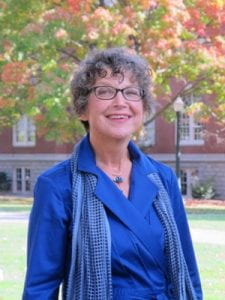Author Archives: morrillmd
Fried Green Tomatoes
Fried green tomatoes are a unique dish that combines nutrition and flavor, and an easy way to sneak some nutrients into any fussy eater’s diet. The dish is prepared frying the tomatoes in about ¼ an inch of oil, in a cast iron skillet. Recipes vary, but some may add bacon or another salty accompaniment to bring out more flavor. A generous pinch of salt is always necessary.
In the more northern parts of the South, fried green tomatoes is usually enjoyed at the end of the Summer, meant to celebrate the end of the tomato growing season. However, in the more southern reaches of the region, in part due to the rise of hydroponic tomato production, the dish can be enjoyed year round.
While many associate the dish with the American South, the origins of fried green tomatoes are not exactly clear. Early recipes for fried green tomatoes can be found dating back to the 1920’s, but the dish did not rise to popularity in the South until the middle of the twentieth century. In an article posted on wvgazettemail.com, writer Susan Maslowski writes that the dish isn’t as authentically Southern as many perceive it to be, and the earliest recipes found in the United States actually hail from the Midwest, with recipes found in cookbooks from the region dating before 1920.
It is now thought that fried green tomatoes rose in popularity, in the South, as a result of Fannie Flagg’s 1987 novel and the subsequent premier of the movie, “Fried Green Tomatoes at the Whistle Stop Cafe.” The novel, which is set in Alabama, set off a booming desire for the dish, around the region.
Whether fried green tomatoes are a uniquely Southern dish, or if it has origins elsewhere is up for debate. However, we can all agree that this dish is unique in its own rite, and is a perfect way to fill one’s belly at any time of the year.
Professor Harriet Pollack (English) (Edited)
Professor Harriet Pollack is an affiliate professor of American Literature at the College of Charleston. Professor Pollack received her BA from Sarah Lawrence College and Haverford College and her PhD from University of Virginia. Before coming to the college, Professor Pollack lived in Senegal with her husband, who was doing field work, taught at Sweet Briar College in Virginia, and then taught at Bucknell University in Pennsylvania.
Though Professor Pollack was born and raised in Pennsylvania, Pollack has a long and deep connection to the South, and Southern literature. Most of her work revolves around the idea of the South as a narrative written on symbolic bodies – the “lady’s” body, the “black” body. As she explains, “rules of social order and the body politic are written on flesh, figuratively and literally, a fact particularly evident in U.S. history and literature, thick with traumatic recollections of black bodies transported, displaced, sold, and brutalized, and white female bodies guarded, protected, restrained, and punished.” Her book, Eudora Welty’s Fiction and Photography: The Body of the Other Woman considers a recurring pattern that pairs a sheltered young “lady” and an “othered” woman—underclass, foreign, or black. Pollack explained, “The othered woman, who is not a ‘ lady’ models ‘making a spectacle of herself’ for the girl character who is fascinated while she herself considers escaping cultural protections in favor of self-exposure.”
Today, Professor Pollack is off campus at her home in Mount Pleasant, SC. Right now, Professor Pollack is publishing a book series, “Critical Perspectives on Eudora Welty,” and for it, is creating a volume tentatively titled Eudora Welty and Mystery. For that collection she is writing an essay about Welty’s civil-rights-era novel Losing Battles, in which a comic mystery leads to sudden murder confession, and a black man hung for a white man’s crime, without consequences.
Aside from her many accomplishments, Professor Pollack is a friendly and humorous individual, who I very much enjoyed interviewing. My favorite moment of the interview came when I asked Professor Pollack how she’d like to be addressed, and I listed off options including Doctor, Professor and Ms. Professor Pollack responded with a smile and said, “just Harriet.”


